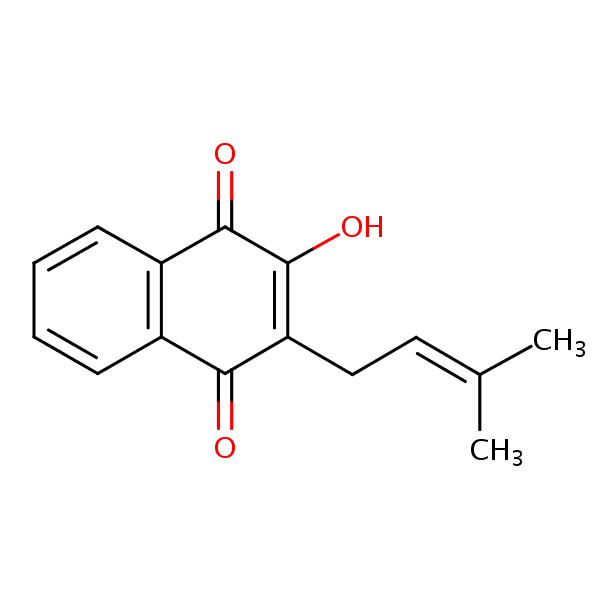See all "Herbs" Section Topics

Pau d'arco (Tabebuia, various species) is a medicinal herb that can be used to treat a yeast infection. The plant is indigenous to South America, and has been used medicinally to treat a wide array of health maladies. The plant has had reported medical uses since 1873. Concerning the research on pau d’arco, many different species of Tabebuia have been studied for medicinal use. Eliminating fungal infections is one use that pau d’arco has a proven track record in. As you read further, you’ll find several different studies that have shown this herb to be a capable killer of many different Candida species.
The two primary reasons pau d’arco probably kills candida, are lapachol and beta-lapachone. These two chemicals are naphthoquinones. In addition to killing yeast, these two chemicals also can kill various bacterial, viral, and parasitic pathogens. Another chemical present in pau d’arco, is xyloidine; a chemical with proven antifungal action.
Dr. James Duke, in his book The Green Pharmacy, suggested that pau d’arco would be an excellent choice for an herbal yeast infection treatment. Dr. Duke personally used a salve containing pau d’arco to clear up a yeast infection; and, said he would do so again if he had another infection. Duke suggested that he would use a commercial preparation of the herb and follow the package directions to cure a yeast infection.

Also note that pau d’arco is a name given to various species of Tabebuia. The specific species of Tabebuia that you use may have a different effectiveness against Candida. In addition to species, the part of the plant you use will also determine the phytochemical makeup of the pau d’arco remedy. Commercial preparations of pau d’arco, that are made to treat a yeast infection, likely contain the herb from a good species and are comprised of the correct plant part. Make sure you check with an herbalist if you are unsure your pau d’arco remedy will be effective at curing Candida.
A 1/2 Day & Yeast is Gone!
Linda Allen suffered from yeast infections for years. Through researching natural medicine & Candida, she found an efficacious solution!
Linda is one expert you want on your side! Let her show you how to get rid of a superficial yeast infection in just 12 hours; AND, keep it gone!
A 60-day, 100% money back guarantee is provided.
Visit Official Site!Pau D’Arco and Candida Research

One study, published in the Asian Journal of Chemistry [23.7 (2011): 3283], found Tabebuia rosea (also called pink poui, and rosy trumpet tree) leaves worked well at stopping Candida albicans. The study used ethanol as a solvent for making an extract with the leaves. The researchers used 100 mcg of Tabebuia rosea extract against several different species of fungi. All the species of fungi tested with this extract, including Candida albicans, were inhibited. Higher doses of this extract would yield more antifungal activity.
Another study, published in the Brazilian Journal of Biology [70.4 (2010): 1065-1068], was conducted on the effects of Pau D’Arco bark on various species of Candida. The species of Pau D’Arco used in the study was Tabebuia avellanedae. The bark of the Tabebuia avellanedae plant was used to create a methanol extraction. The species of Candida used in the study were C. albicans, C. dubliniensis, C. parapsilosis, C. tropicalis, C. guilliermondii, C. utilis, C. krusei, C. lusitaniae, C. glabrata, and C. rugosa. The study found that the methanol extract of pau d’arco worked exceptionally well at inhibiting the development of all the Candida species. Only a fraction of a milligram of the extract was necessary to inhibit these yeasts.
A study published in Mycoses [52.6 (2009): 511-517], revealed that pau d’arco (Tabebuia caraiba) stem bark was capable of inhibiting Candida albicans. The dose that was used in the study which inhibited Candida albicans was 20 mg / mL.
Eliminate Bacterial Vaginosis & Vaginal Odor
Jennifer O’Brien is one prominent expert on BV that knows how to get rid of vaginal odor. BV is a common infection that you don’t have to put up with.
Jennifer will show you how to naturally eliminate vaginal odor in just 3 days.
A 60-day, 100% money back guarantee is provided.
Visit Official Site!Pau D’Arco Side Effects
In general, pau d’arco is safe for most people to use. Side effects are uncommon; but, occasionally, using this herb may cause nausea, diarrhea, anemia, or dizziness. If you take too much pau d’arco, high doses can cause uncontrolled bleeding and vomiting.
Clair Goodall: Author & Nature Lover
Clair Goodall is a bee-obsessed natural medicine convert from Minnesota. She is one expert you might want to know more about!
Clair will help you protect you and your family from toxic products and chemicals and help you discover solutions from nature.
Also, Clair’s book is backed by a 60-day, 100% money back guarantee
Visit Official Site!A Natural, 12 Hour Yeast Infection Cure

According to a research paper published in Clinical Microbiology Reviews [12.1 (1999): 80-96], Candida species are quite ubiquitous organisms. Candida are most frequently present in the mouth; and, live in 31% to 55% of healthy people. The species that causes approximately 70% to 80% of all Candida infections is C. albicans.
The Chinese Journal of Obstetrics and Gynecology [2011 Jul;46(7):496] reports there appears to be a correlation between intestinal Candida infections and vaginal yeast infections. And, this provides a clue, as to why yeast infections in general, can reoccur.
This study states, in 148 cases of vaginal candida infections, 33.1% of the women were infected in both the intestines and vaginal area. The recurrence rate of yeast infections, in women with simultaneous intestinal infection, was significantly higher than for women who did not have an intestinal infection. This study concluded that vaginal yeast infections are highly associated with simultaneous intestinal Candida infection.
As research appears to indicate, systemic Candida infections can and do happen. A more systemic Candida infection may primarily get a foothold in the intestines; and cause a wide array of problems. If your yeast infections keep happening, a systemic Candida problem may be why.
One woman who suffered from a systemic Candida infection, for about 12 years, was Linda Allen. The systemic Candida infection that attacked Linda caused a wide range of health problems in addition to yeast infections. Some of these problems, Linda describes in her own words in the following quote:
To be honest, it was hard to pinpoint exactly what was wrong: I wasn’t really sick, but I wasn’t really well either. I had listlessness, fatigue, brain fog, stomach ailments, unexplained rashes, skin infections, and so on. It seemed like every day brought a new challenge.
My energy was sapped and I felt exhausted, which affected my grades and put a big dent in my social life.
Linda Allen’s symptoms included an embarrassing vaginal discharge, severe itching, and burning sensations. Her infections were difficult to deal with, and Linda’s health problems cost her financially as well. Linda states these infections of Candida can become excruciating when they happen as frequently as a menstrual period.
Yet, Linda spent a great deal of time in research; and even questioned health professionals who were kind enough to share some time with her. Linda even tried an array of purported "cures." Although it took a while, eventually, Linda put together a natural treatment plan she hoped would solve her Candida situation.
After spending about a year refining her new approach, Linda tried her system on herself. It worked amazingly well. Linda even returned to a few medical doctors to get tested for the presence of infections. These tests revealed all indicators of infection had vanished! Linda was indeed well again, after such a long, difficult journey.
Linda has since published a book detailing how to copy her success. She also includes a 12 hour yeast infection cure that can get rid of a superficial (such as a genital yeast infection or oral thrush) yeast infection in about 12 hours.
Linda’s publisher protects those who get her book with a 60 day, 100% money back guarantee. Linda’s publisher, a subsidiary of the United States based firm Keynetics Incorporated, is a reputable digital retailer that has been around for a long time. They have great customer service, and make getting a full refund on Linda’s book quick and easy. If you’re not satisfied, you can quickly get all your money back.
If you would like to learn more about Linda’s journey to freedom from Candida, see reviews of others who tried her natural system, or find out more about her efficacious book; you can find more information at Linda Allen’s website.
Author: Mr. Nicholas Gross

Nick Gross is a natural medicine enthusiast who has been researching and writing about natural medicine since 2008. Nick is primarily a web developer but also researches and authors written and video content about natural health. Nick has a bachelor’s degree in Management Information Systems from the University of Northern Iowa.
Disclaimer
The information on this website is not a prescription for anyone. This information is for informational or educational purposes only, and is not a substitute for professional medical advice or consultations with healthcare professionals.
Affiliate Disclosure
Some of the links provided on this website are affiliate links. When a purchase is made through these links, Candida Hub earns money from commission. This helps to keep the website up and helpful to people for free. Thank you for any support!
Stay Up to Date
If you enjoyed this article, consider following / liking our Facebook page. This page is primarily utilized to alert followers of new articles that are put on Candida Hub. Candida related news is also discussed. While you are there, you can see what has been more recently added to Candida Hub.
SOURCES:
- http://www.asianjournalofchemistry.co.in/user/journal/viewarticle.aspx?ArticleID=23_7_102 — Saravanan, V. Sakthi, et al. "Antimicrobial Activity of Ethanolic Extract of Leaves of Tabebuia rosea (Bertol.) DC." Asian Journal of Chemistry 23.7 (2011): 3283.
- http://dx.doi.org/10.1590/S1519-69842010000500022 — Höfling, J. F., et al. "Antimicrobial potential of some plant extracts against Candida species." Brazilian Journal of Biology 70.4 (2010): 1065-1068.
- http://dx.doi.org/10.1111/j.1439-0507.2008.01647.x — Silva, E., et al. "Evaluation of the antifungal potential of Brazilian Cerrado medicinal plants." Mycoses 52.6 (2009): 511-517.
- https://doi.org/10.1128/CMR.12.1.80 -- Fidel, Paul L., Jose A. Vazquez, and Jack D. Sobel. "Candida glabrata: review of epidemiology, pathogenesis, and clinical disease with comparison to C. albicans." Clinical Microbiology Reviews [12.1 (1999): 80-96].
- https://pubmed.ncbi.nlm.nih.gov/22041440/ -- Lin XL, Li Z, Zuo XL. "Study on the relationship between vaginal and intestinal candida in patients with vulvovaginal candidiasis." Chinese Journal of Obstetrics and Gynecology (Zhonghua fu chan ke za zhi). [2011 Jul;46(7):496].







